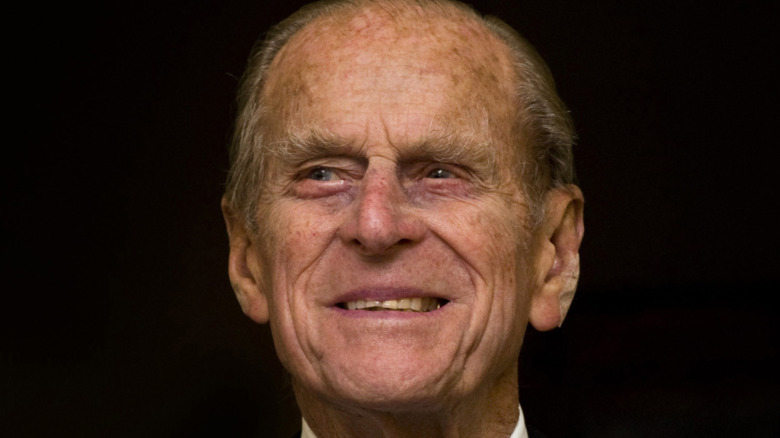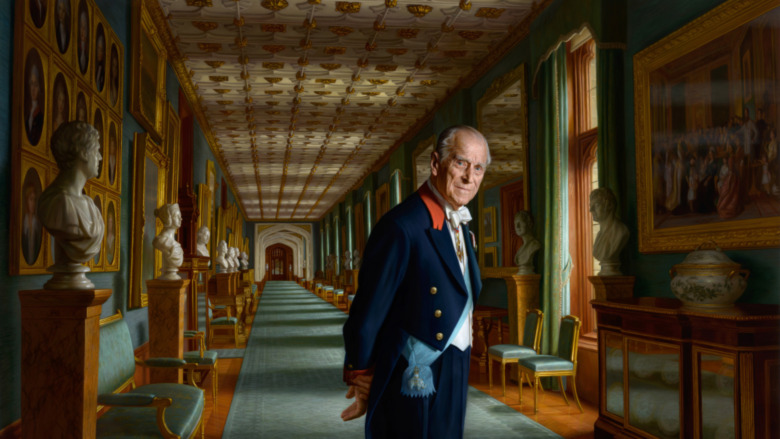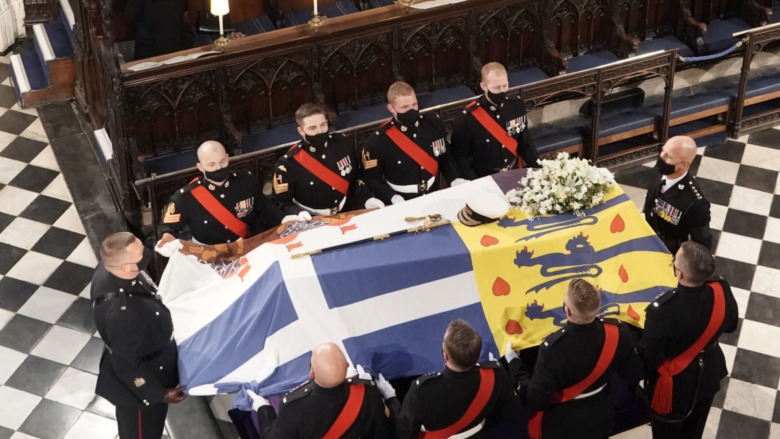The Truth About Prince Philip's Last Portrait
Before the rise of the selfie, painted portraits captured people's essence and promoted their legacy. While many early civilizations, including the ancient Egyptians, the Greeks, and the Romans, used portraiture, Daily Art Magazine relates that it wasn't until 1505 and King Henry VIII when the British monarchy began immortalizing their royalty on canvas, painting their images from live models.
Prince Philip, the Duke of Edinburgh, who died on April 9, 2021, sat for a last portrait in 2017 before retiring from public service. He spent an hour posing in the grand corridor, an area filled with artwork and marble busts at Windsor Castle, for painter Ralph Heimans, wearing his formal clothing.
The portrait shows more than one look will reveal, according to MSN. Heimans, a longtime royal painter, collaborated with the duke to include elements from his personal history in subtle places within the painting. For instance, the corridor shown in the portrait actually leads to an important room: the place where Prince Philip's mother, Princess Alice of Battenburg, and grandmother, Princess Victoria of Hesse, were born. The pathway is also in the Duke and Queen's private quarters, a space they shared together for 73 years and the location where the Duke died.
"In some ways that corridor itself represents his lifespan," Heimans said to MSN. "There's something very powerful and symbolic about that space that I think has added to the strength and the poignancy of the portrait."
A painting filled with personal details
More personal tokens from the Duke's life are found in the paintings which are themselves included in the portrait (which is pictured above), with one directly across from where Prince Philip stands showing Queen Victoria and the Danish Royal family, including the Duke's mother when she was young.
The Duke also gives a nod to his Danish roots by wearing the Order of the Elephant on a blue sash. Denmark's oldest royal order of chivalry goes back to 1460, when the badge showed the Virgin Mary and Baby Jesus, worn with a chain filled with "tower-bearing elephants," according to the Royal House of Denmark's website. By 1693, the Order's look changed to include a chain-link collar, an elephant saddled with a tower, and a blue sash along with a star placed on the left chest.
Inclusion of elements from his Danish heritage was important to the Duke, especially since the painting was partly commissioned by the Danish National History Museum. He also wanted to include his heritage in his funeral. Prince Philip selected several medals and decorations he received throughout his life for display on St. George's Chapel's altar, including the Order of the Elephant and the Order of the Redeemer, which symbolize his birth heritage, according to The London Times.
The special details of Prince Philip's life
The flag, divided into four quarters, on Prince Philip's coffin also acknowledged his Danish and Greek background, according to Insider, with part of it representing the Danish coat of arms — a yellow square, three blue elongated lions and nine red hearts — and a segment of the Greek flag with its white cross and blue stripes. The last two sections represented other parts of his life, and depicted Edinburgh castle and the Mountbatten family black and white stripes.
The Duke was one of five children of Prince Andrew of Greece and Denmark and Princess Alice. He gave up claim to his royal titles to marry Queen Elizabeth II on November 19, 1947. He was 99 when he died.
Prince Philip acted as a good model, according to the artist who painted him. "Sitting was, in fact, a lot of fun," Heimans told Hello! magazine. "As you can imagine, he's full of humor but underlying that there's a sense of seriousness about the portrait."


